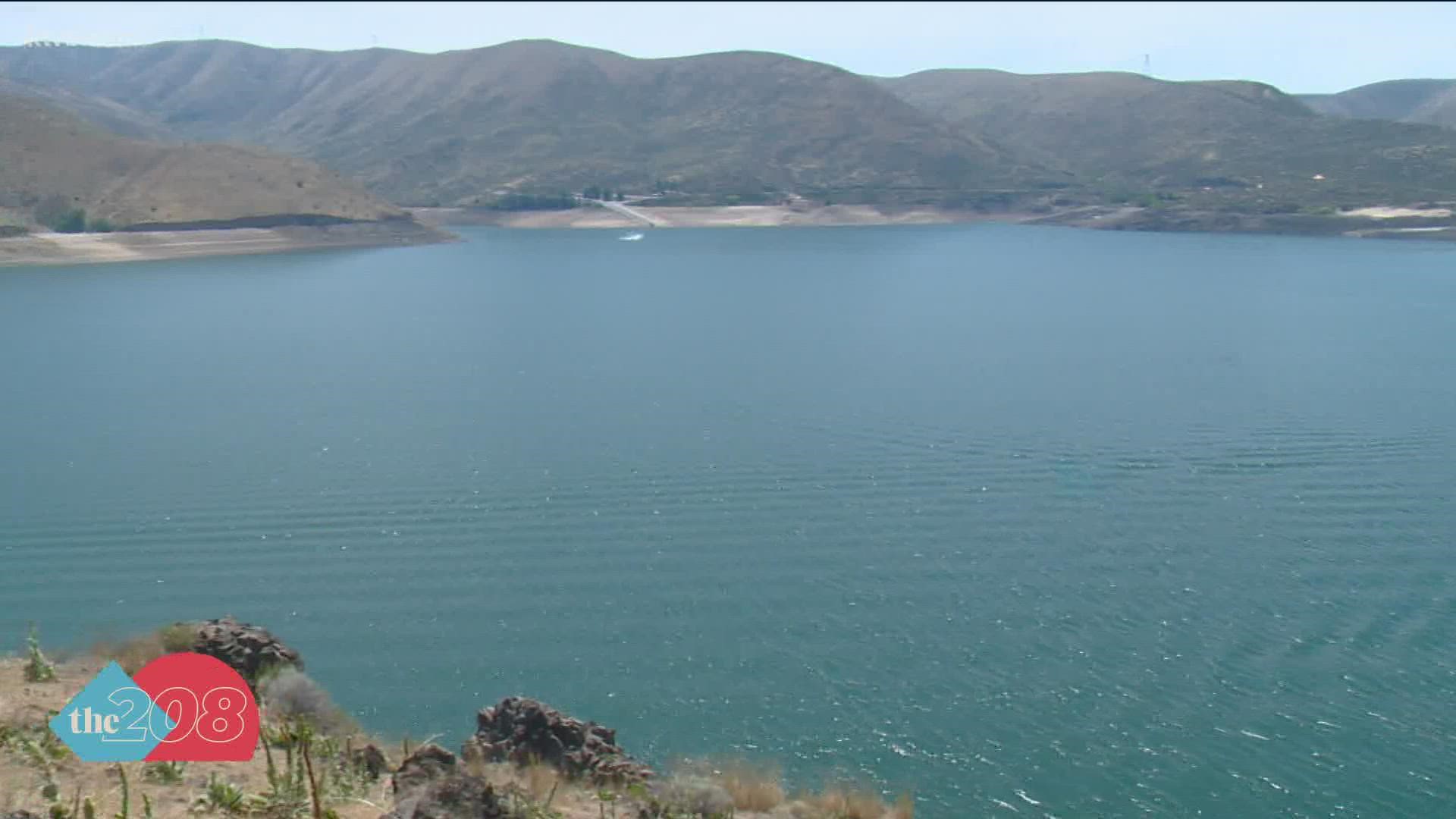BOISE, Idaho — Anderson Ranch, Arrow Rock, and Lucky Peak reservoirs -- all part of the Boise River system -- can hold a total of one million acre-feet of water when full.
However, they're far from full right now.
As of August 11, the three reservoirs have a total of 400,000 acre-feet. This, as all of Idaho is experiencing drought like we haven't seen in decades.
Ryan Hendrick, water operations lead with the Bureau of Reclamation, said Lucky Peak alone is currently dropping by anywhere from 2.2 to 2.5 feet a day. Because the snowpack was close to average, many water users, including farmers, didn't anticipate a bad water season.
“A lot of the times in the spring when the runoff is occurring, we are getting rain and it's allowing the irrigators to not begin pulling water from their storage, and this year they had to begin early. Crops were in the ground, and they needed to start watering them,” Hendrick said.
According to Hendrick, the lack of spring precipitation created less runoff than usual and the soil was drier than normal, causing the snowpack to soak in the soil and not run off into the reservoirs. Because of the low water amounts, Hendrick said irrigators plan to shut off in September, one month before the typical crop season ends.
The average acre-feet amount of water in the Boise reservoir system from 1981-2021 is around 615,000 acre-feet. As of August 11, 2021, it's at 400,000 acre-feet, trending far behind the last five years.
“Several of the irrigation entities in the valley have went from 100 percent delivery to 70 and, in some cases, even 60 percent of what they are able to divert in order to stretch their supply as far as possible,” said Rex Barrie, Boise River Water Master with the Idaho Water Users Association.
Barrie said two of the largest irrigation providers in the Treasure Valley -- the New York Canal and Nampa/Meridian Irrigation District -- announced they will stop delivering on September 15th, 30 days ahead of time.
“The guys need their water to get their crops through to get their full yield, and reduced yield means reduced pay, so they have got a lot of money invested in these crops. When they can’t get the full amount of water that they really need, it puts stress on some of those crops and, consequently, a reduced yield,” Barrie said.
According to Barrie, 2021 is looking very similar to 1977, which was the worst year on record for water delivery in the Boise system.
The New York Canal is the largest distribution system in the valley, at 2,000 cubic feet per second. Right now, 1,900 of that is storage water, which means less carryover water into next year.
“We are all in this together if you live in this valley. We all depend on the Boise River in one form or another and for everyone to do all they can to conserve as much as possible,” Barrie said.
Join 'The 208' conversation:
- Text us at (208) 321-5614
- E-mail us at the208@ktvb.com
- Join our The 208 Facebook group: https://www.facebook.com/groups/the208KTVB/
- Follow us on Twitter: @the208KTVB or tweet #the208 and #SoIdaho
- Follow us on Instagram: @the208KTVB
- Bookmark our landing page: /the-208
- And we also turn each episode into a podcast on Podbean
- Still reading this list? We're on YouTube, too:

